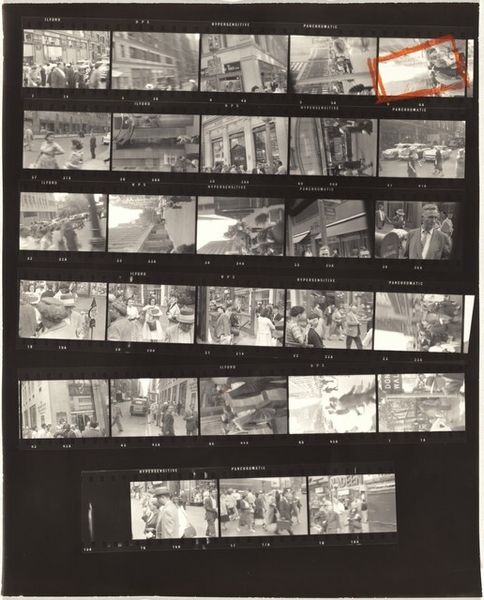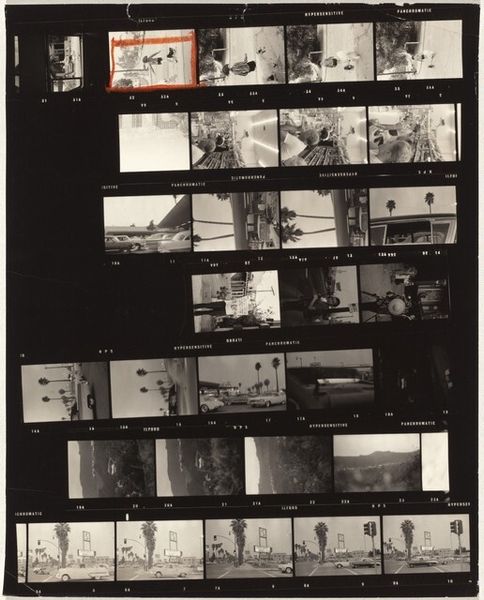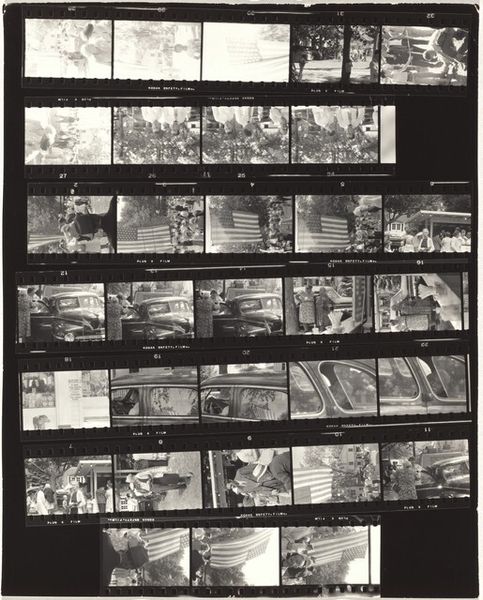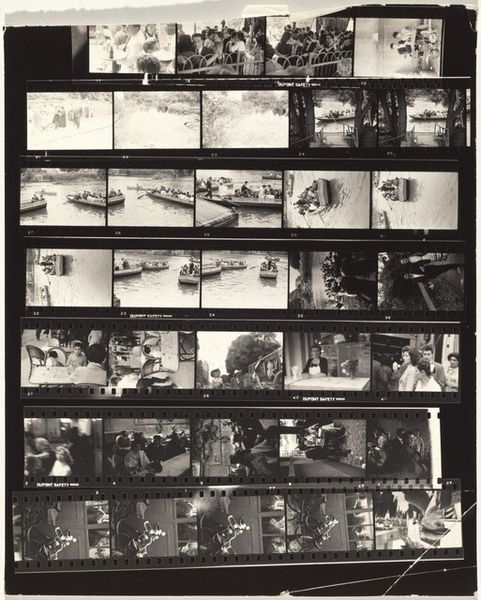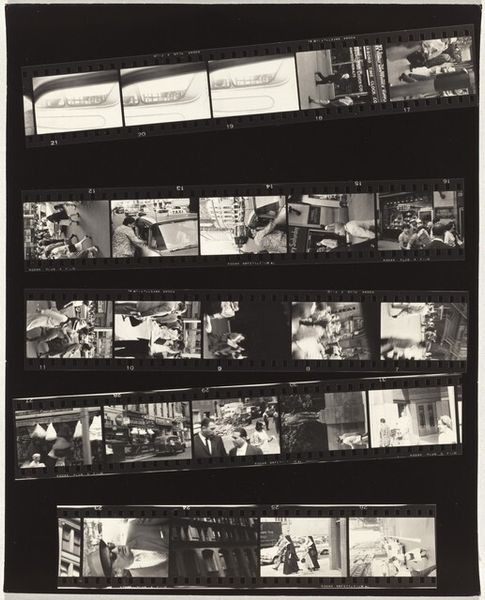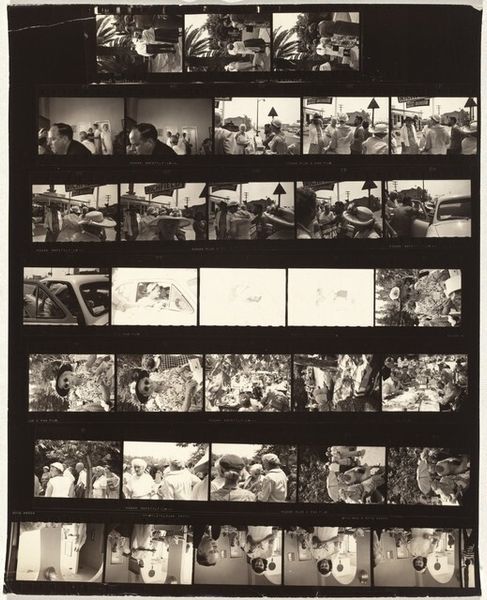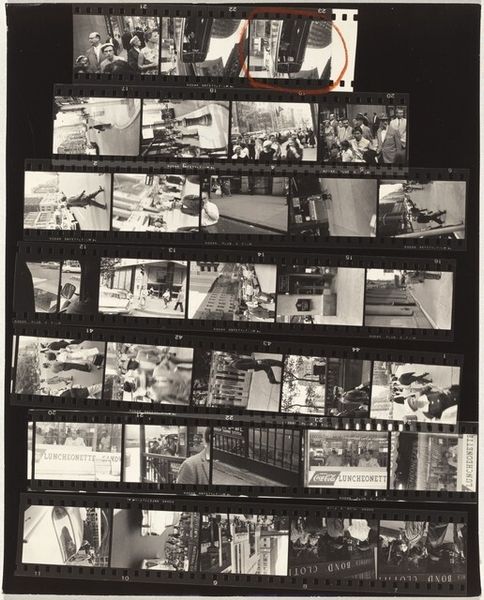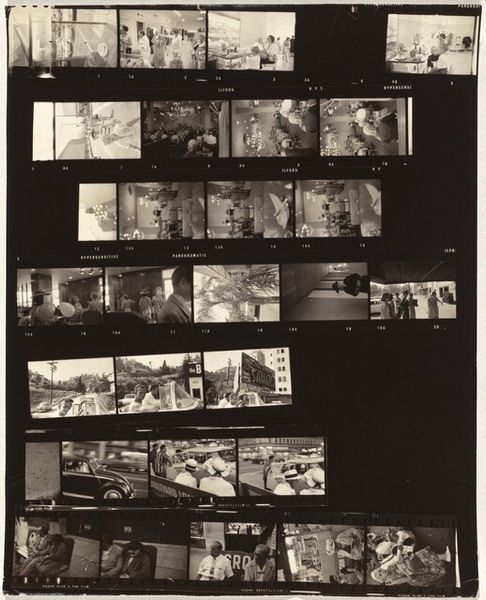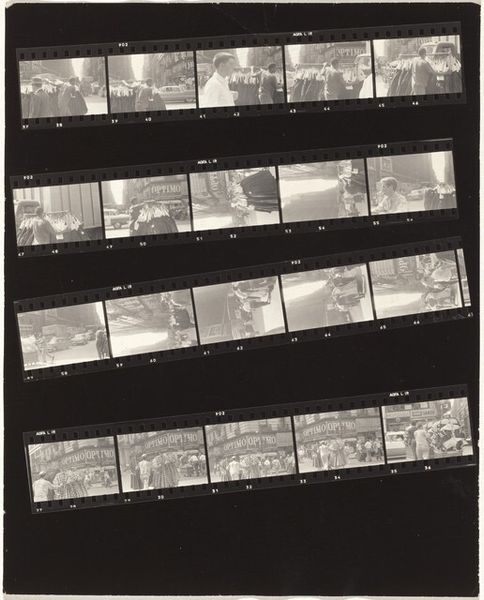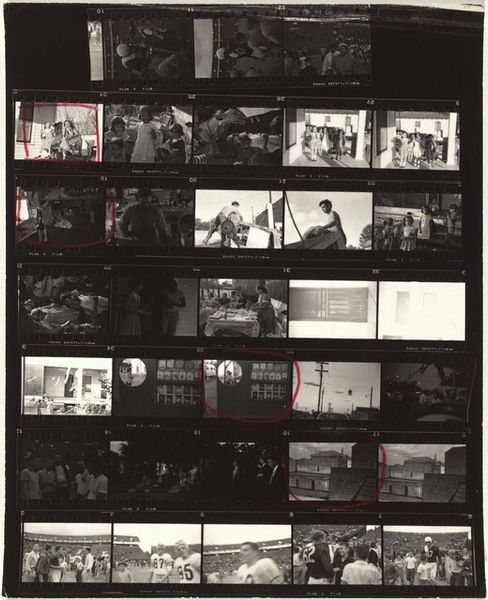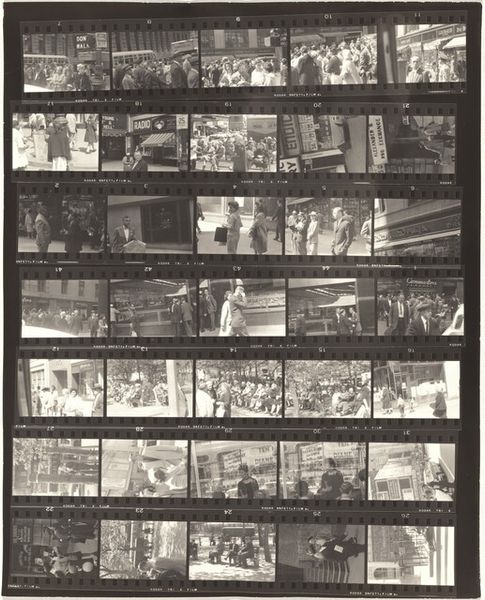
Dimensions: overall: 25.2 x 20.2 cm (9 15/16 x 7 15/16 in.)
Copyright: National Gallery of Art: CC0 1.0
Curator: Robert Frank's "Hollywood 7" from 1958, is a gelatin-silver print presented as an unedited contact sheet. What strikes you immediately about this work? Editor: The immediate impression is its chaotic nature. The numerous small frames vie for attention, creating a restless, almost anxious feeling. The stark contrast in the black and white intensifies this feeling; it's less a composed photograph and more a raw document. Curator: Exactly, and that's partly the point. Frank was interested in capturing a less romanticized version of America. In "Hollywood 7," we're given glimpses into everyday life, framed within the context of 1950s American consumerism and nascent social tensions. He used his camera as a tool to dissect the facade of the "American Dream." Editor: I see how the compositional disarray echoes that thematic concern. The composition directs the eye to dart around without pause—is this intentional? Do you think this reflects a disruption of traditional photographic techniques to show a break with the formal "perfection" of that earlier era? Curator: Precisely. The apparent randomness disrupts established visual hierarchies. Think of the title "Hollywood." What could be further than Hollywood that represents "The Dream" of America? We should discuss Robert Franks relationship to American values. Editor: A film roll shows that Hollywood life is one where its true representation is full of shadows. A shadow version of glamour. Are there clues of his vision? Curator: Absolutely. One can interpret the subjects of this contact sheet in conversation of American cultural phenomena: a reflection of societal changes of gender roles, family structures, technological progress, and economic shifts... The narrative plays across each captured image. Editor: And the film negative presentation reminds me how, formally, Frank almost denies the aesthetic distance usually preserved between the photographic process and the final artwork. What implications could this lack of editing mean for understanding his project? Curator: Well, Frank's decision to leave it unedited suggests a deliberate act of resisting control. He embraced imperfection, inviting viewers to engage with the images in a more immediate and unfiltered manner. The overall work challenges what a polished presentation is by acknowledging socio-political circumstances. Editor: A vital piece, indeed. I see much better now how these elements function as statements that invite you to analyze each frame but as a combined, greater, unified reading of his artistic expression and a statement to ponder in how the work exists between form and message. Curator: Indeed. Each chosen photo, whether conscious or otherwise, speaks volumes when you start deconstructing Frank's commentary on American society during a rapidly transforming period.
Comments
No comments
Be the first to comment and join the conversation on the ultimate creative platform.
